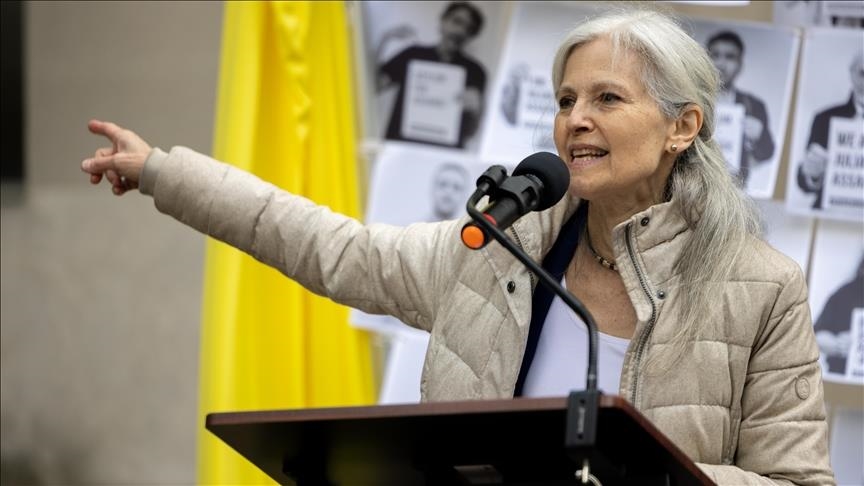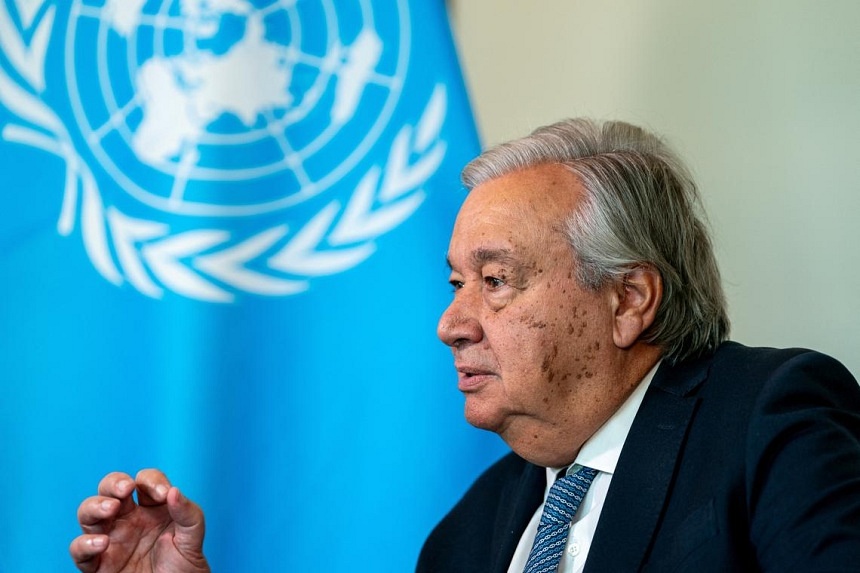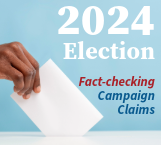- - -
After Tuesday night’s debate, as former president Donald Trump worked the reporters in the spin room in Philadelphia, Vice President Kamala Harris’s TikTok team was busy appealing to a different crowd.
In the digital “war room” at campaign headquarters in Wilmington, Del., they hit the button on their pièce de résistance shortly after midnight: A six-second video that mocked Trump’s performance by showing his lectern inhabited by a laughably dramatic “Dance Moms” star. “I thought I was ready to be back. I thought I was stronger than this but obviously I’m not,” she lamented. “I wanna go home.”
Viewed more than 7 million times, the video was produced by a small TikTok team - all 25 and under, some working their first jobs - given unfettered freedom to chase whatever they think will go viral. Over the past eight weeks, Harris’s social media team has helped supercharge her campaign, harnessing the rhythms and absurdities of internet culture to create one of the most inventive and irreverent get-out-the-vote strategies in modern politics.
They have trolled Trump inside his own social network, Truth Social. They have made viral memes out of bags of Doritos and camouflage hats. In 2016, a single Hillary Clinton tweet might have required 12 staffers and 10 drafts; today, many of Harris’s TikTok videos are conceived, created and posted in about half an hour.
“This campaign empowers young people to speak to young people,” said Parker Butler, the 24-year-old director of Harris’s digital rapid response content, a team that watches all of Trump’s speeches and can blast a clip onto social media at a moment’s notice. “And we’re here to put in the work.”
Trump also has leaped forcefully into social media, seeing it as critical to grabbing voters’ attention in an age of mass distraction. But while Trump has posted attacks on Harris’ intelligence, warnings of economic “disaster” and grim polemics about how America’s “FUTURE IS AT STAKE” - “We’re a nation in decline,” he says in one video, holding handcuffs aloft. “Nobody is safe. Absolutely nobody” - the Harris team has adopted a more playful approach, chasing virality with snarky, upbeat and oddball content delivered at internet speed.
Trump’s team has occasionally worked to mimic Harris’s online energy, but with darker memes. This week, Trump’s Truth Social account posted AI-generated images showing him saving cats from a crowd of dark-skinned men - a reference to the false claims that Haitian immigrants in Ohio are eating pets, which Trump repeated on the debate stage. In other images, cats hold up signs reading “Don’t Let Them Eat Us. Vote for Trump!” and “Kamala Hates Me.”
Harris’s “digital rapid response” team, as it’s called, is active on every major social platform, posting family photos on Facebook, hours-long speeches on YouTube and Spanish-language calls to action on WhatsApp. On debate night, they hosted live-streamed watch parties on Twitch, walloped Trump’s untruths on Threads and X, and hyped Harris’s most fiery lines on Instagram and TikTok. Minutes after she claimed Trump rallygoers leave “his rallies early out of exhaustion and boredom,” her team posted the clip with the caption, “Holy s--- 🔥🔥🔥 She just cooked him,” following up with a photo of Harris in a kitchen, smiling.
“They really run it like a fan account,” said Rachel Karten, a social media consultant who writes Link in Bio, a newsletter about online culture. “It’s not like it’s coming from a campaign. It’s like: We talk like you. Even the caption is like: ‘You have to watch this.’”
The online rollout has helped Harris circumvent the tough questions and uncertainties of the traditional political press, allowing her to reach millions of voters who turn to social media as a news source. By the time Harris sat for her first big TV interview as the Democratic nominee, she had already appeared in dozens of social media videos, giving direct-to-camera monologues about Roe v. Wade, chatting on the phone with the Obamas and talking with her running mate Tim Walz about “White guy tacos” and the guitar skills of Prince.
The approach seems to be paying off. The Harris campaign has gotten 100 million more views than Trump on TikTok, despite having half as many followers, according to an analysis of data from Zelf, an online measurement firm.
It’s also gotten under Trump’s skin. He posted a Truth Social video this month saying his campaign had “the greatest social media program in history” and that any claims of Harris’s online success were “misinformation”: “She’s not even a small fraction of what we do. But that’s the way they do it, they lie.” He has also, without evidence, accused her team of paying for fake followers. The Harris campaign responded, “Rent free” - as in, how they’re living, inside his head.
Campaign officials say the digital operation has seen success beyond social media. To some supporters, it’s a big reason the 59-year-old politician is generating interest among young voters.
“That’s kind of like what charisma is today: Can you land well on the internet?” Colton Wickland, 27, said at a rally in Milwaukee last month.
- - -
‘Create the news’
Though only a small fraction of her campaign’s 250-person digital operation, Harris’s social media team is by far its most visible part, running all her accounts and watching for trend-worthy moments they can spotlight in real time.
Deputy campaign manager Rob Flaherty, who has described them as a pack of “feral 25-year-olds,” said the campaign started developing the strategy last year, worried voters had forgotten who Trump was and that the campaign needed “a voice that was more aggressive and hard-hitting” to remind them.
The team faces minimal content-approval checks and “barring objection, we’re gonna go. Everything goes on a five-minute warning,” Flaherty said. “You just gotta trust your people. Our f---up ratio [is as low] as if there were 19 layers of approval.”
A 13-person rapid-response team keeps a shared calendar of all major political events for both Republicans and Democrats and monitors them in shifts to ensure “we are never not watching,” said Butler, the team’s manager. When an eye-catching moment happens - like when Trump said immigrants had “poisoned” the country - the team races to post a clip of it on social media, working shifts that sometimes go past midnight.
“Campaigns are not just responding anymore,” Butler said. “Our job is to create the news.”
Each of the team’s social media “strategists” specializes in an individual platform, catering to its audience, subculture and slang. One strategist, for instance, is solely responsible for Facebook, where Butler said content for baby boomers thrives.
Lauren Kapp, 25, heads the five-person TikTok team. Every day, she wakes around 6:30 a.m. and starts scrolling the video app so she can be ready for their daily 9 a.m. meeting, when the team breaks down what’s trending that day.
A few years ago, Butler and Kapp were both fresh graduates of what Kapp called “the covid class.” Butler, a high school debate champ in Texas during Trump’s presidency, graduated from American University in 2020 and landed work as a video editor for Biden’s campaign. Kapp, who struggled to find a job as a political correspondent after leaving University of California, Berkeley, was hired by the Democratic National Committee as a “vertical video producer” after building a midsize TikTok following under the username “Poli Sci Princess.”
Earlier this year, both shifted from the Democrats’ online operation to the Biden-Harris team, where their job is not to mimic the cinematic editing and high production values of traditional campaign ads but instead to behave like typical TikTok users: reposting other people’s videos, sharing memes and sound bites, and reacting to major news moments, such as the particularly spicy dig Walz took at Vance during a speech in Philadelphia (“omg Tim Walz WENT THERE”).
They’ve “stitched” Trump into clips that tee him up as a punchline and split-screen his comments on abortion alongside the mobile game “Subway Surfers” - a common TikTok tactic for keeping overstimulated viewers’ attention. One post ranked photos of Walz by “aura points,” TikTok slang for a measure of coolness. (Enjoying a state-fair ride with his daughter, Hope, was “+23958 aura.”)
The team records and edits the videos on their phones before sending them over Slack to Butler, who typically reviews and signs off in less than 15 minutes. It can look freewheeling, but the team treats its content strategy like a science. Kapp said she won’t use any TikTok “trending sound” - the short audio clips that users can apply to their own videos - if it’s been used in more than 200,000 videos. “People get bored very easily,” she said.
After the Democratic convention, Kapp had just gotten home from Chicago and was trying to think of ways to emphasize Trump’s links to the conservative policy doctrine Project 2025 when she opted for a wild juxtaposition: a niche TikTok meme of dolphins and rainbows. The single-image post is now one of their most popular pieces of content, with more than 7 million views. Trump’s campaign copied it a few days later.
“You wouldn’t anticipate a political campaign to do it, which is what contributed to the virality of it,” she said.
TikTok is one of the world’s most popular social apps, with 170 million U.S. accounts, and roughly 40 percent of its American users said they use it to keep up with politics or current events, a Pew Research Center survey found last month; Trump’s campaign employs a TikTok team of its own.
For Harris, there’s an awkward hurdle, however: The Biden administration is currently defending in court a potential nationwide ban of TikTok, arguing the Chinese-owned app is a national security threat. Harris’s team uses TikTok on phones with nothing else installed to abide by a federal prohibition of the app on government-owned devices.
The campaign’s online engagement has skyrocketed during the Harris era. On TikTok, their “like-to-view” ratio, a measure of viewer engagement, went from about 10 percent during the Biden months to 25 percent, Kapp said.
And though campaigns dating back to former president Barack Obama have taken social media seriously, the Harris team’s big innovation has been letting a new wave of Generation Z innovators take control, said April Eichmeier, an assistant professor who studies political communication at the University of St. Thomas in Minnesota.
“The under-25 group right now has never known a world without digital media,” she said. “They know how things land on TikTok because that’s their culture.”
The team’s seemingly frenetic and amateurish output conceals a sophisticated strategy, said Lara Cohen, a former executive at X who led some of its top partnerships with media operations and influencers. Each viral video helps them sneak into nonpolitical spaces and reach voters who are undecided or otherwise tuned-out.
“Great ideas die with too long an approval process,” said Cohen, now an executive at the creator-service company Linktree. “Someone’s going to be too worried to do something edgy. And they’re clearly not afraid of that.”
- - -
‘Oh he’s mad lol’
As the campaign’s social media experimentation has exploded, the lines between its online and offline presence have blurred. TikTok-style monologues have appeared in TV ads. Candidate selfies in field offices have appeared, from multiple angles, on Instagram. The campaign’s $40 camouflage “Harris Walz” hat has shown up not just in TikTok videos but on the head of Harris’s stepdaughter Ella Emhoff.
Harris and Walz, too, have tried their best to be omnipresent. During the convention, Harris played a name-that-song quiz with a social media show and told another creator that her favorite Chicago food was an Italian beef sandwich. Walz recently appeared on the short-video show “Subway Takes,” in which comedians offer their most controversial or raunchy opinions; Walz extolled the value of home-gutter management.
The goal, campaign staffers said, has been to humanize the candidates in a bitterly contentious race. After a Harris fundraising email said she’d coped with Trump’s 2016 election victory by scarfing down “a family-sized bag of nacho Doritos,” leading one Fox News guest to complain it was not “the response of an elite leader,” Walz’s X account posted a video showing him grabbing her a bag between campaign stops. “Every attack on her only seems to make her more relatable,” one viral Threads post said.
Rather than characterize Trump as a generational threat, Harris’s operation has often worked to cast him as an “unhinged and unserious man” and the butt of a big joke. Last month, when Trump suggested he might back out of this week’s debate, the team layered his video clips with the sound of a chicken. And where previous campaigns were reluctant to amplify Trump’s attacks, the Harris campaign has repeated them verbatim to mock or defang them alongside quips like “Oh he’s mad lol.”
Harris’s team has gone on the offensive inside Trump’s Truth Social, using their 350,000-follower account to needle Trump about his crowd size. Beyond just laughs, one campaign aide said a goal of the account is to rattle and enrage Trump inside his online safe space. After the debate, Harris’s team posted Fox News clips calling Trump’s performance a “train wreck.”
Trump’s campaign has derided Harris’s strategy as juvenile, with a spokesman saying anyone who thinks “using emojis is some cutting-edge message technique … [is] severely out of touch with reality.”
On TikTok, however, Harris’s team has proved so popular that people claiming to secretly run the account has become a meme in itself. To show it’s in on the joke, the campaign posted a video featuring Harris’s husband, Doug Emhoff, who - when asked who runs the account - dryly replies: “It’s obviously me.”
The real test will come in November, when the election shows whether sway on social media can produce real-world power. With less than two months until Election Day, Harris’s TikTok has shown a pivot toward more substantive fare, including a multipart series laying out Trump affiliates’ links to Project 2025.
They’ve also worked to capitalize on a new sense of hope among Democrats. One video, built on a trending clip of poignant music typically used for scenic vistas and sunsets, features a voice-over - “Oh, I wasn’t sad, I just needed a …” - then cuts to a buoyant DNC crowd cheering near an American flag.
“They’ve basically created this digital [fandom] of her,” Cohen said. “It sounds corny, but the most successful people online are the ones who feel unfiltered and authentic and real. That’s what people rally around.”
- - -
Dylan Wells contributed to this report.










